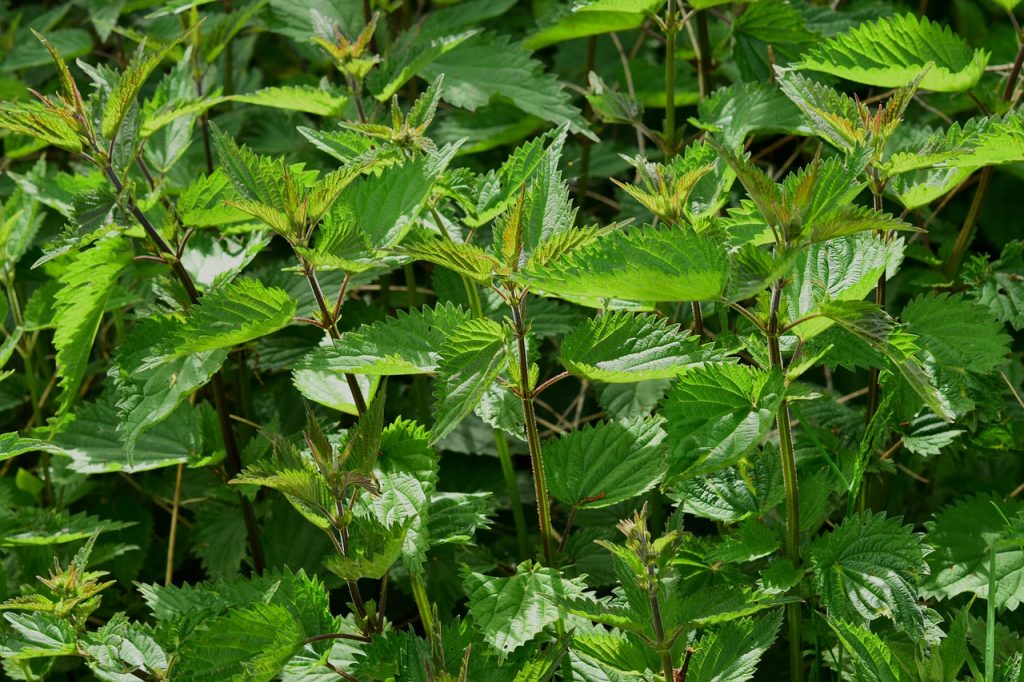There is more to the stinging nettle than the sting! If only people know the medicinal benefits of a bed of nettles then I believe the philosophy of this aggressive plant will be well worth the while. It could be that the stinging bit is its way of forcing itself to gain human attention. Imagine a plant that is regarded as a weed by many, seen virtually everywhere in the neighbourhood, but not appreciated because of only one aspect, its sting!
The nettle is one of the prima donnas of phytotherapy having been recognized since the first century by Dioscorides and his Spanish translator, Andres de Laguna, a physician of the sixteenth century who said “they may excite people towards lust” amongst other things. But how could these stinging leaves be able to excite? Messegues state that the Latin poet Caius Petronius recommended to men who wanted to increase their virility to be whipped “with a bunch of nettles on their lower stomach and their buttocks”; this tradition was also practiced by ancient Greeks. It is called urtication.
Besides this sexual effect, urtication (gently hitting the skin with the bunch of freshly gathered nettles) causes a repulsive effect that attracts blood to the skin, thereby decongesting internal tissues. This is especially good for rheumatic disorders. But how many people have enough guts to do it? Scientifically, we now know that the hairs of nettles (Urtica dioca) contain histamine (1%) and acetylcholine (0.2-1%); both substances are also produced by our body and take an active part in the circulatory and digestive systems as transmitters of the nervous pulses of the autonomic nervous system. About ten milligrams of these are enough to cause a skin reaction. In order to calm people who are afraid of this plant, it is said that after midnight or 12 hours of being gathered, its stinging effects disappear and the plant acquires a velvet-like touch. It is good to know that the stinging itself is a form of defense mechanism in the plant to prevent it from being eaten down by rabbits, cows, donkeys and other herbivores.
Nevertheless, the sting does not exhaust the whole philosophy of the nettle. Look at the stems and leaves, they contain a high amount of iron in combination with the chlorophyll which makes them a high source of protein (hence their anti-anemic action). When fresh they contain from 6-8g per 100g and when dried 30-35g (similar to that of soya beans). It is consumed raw in salads, omelets, and soups or simply boiled as a vegetable. It is a good substitute for spinach or even better because it is less sour. Nettles are also rich in other minerals salts like phosphorus, magnesium, calcium, and silicon. Also, vitamins A, C and K, formic acid, tannin and other substances which make the nettle one of the cheaply available medicinal plants in the world, as it can be found by ditches, road sides, abandon plots, garden, etc.

Its medicinal benefits also include its depurative and diuretic action recommended for gout, arthritis, kidney stones, and urinary sand. Others are its vaso-constricting and hemostatic effects recommended for uterine and nasal hemorrhaging which is quite useful for women with excessive menstruation. It eases digestion and improves food assimilation. It is hypo-glycemic (decreases the level of sugar in the body especially in diabetes patients, though it cannot be substituted for insulin). It also increases lactation in breastfeeding women. It is also recommended in chronic skin problems especially eczema, acne, and eruptions. It cleanses the skin, regenerates, and makes the skin healthier and it is also useful in hair loss. With all this information I hope we will never overlook the nettle because of its sting.
Rewritten from THE JOURNEY

